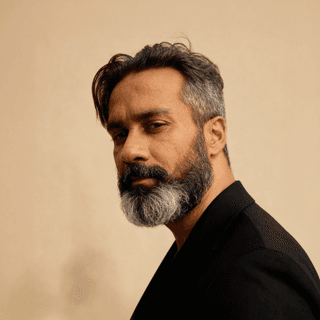
For creative leaders using AI, the balance between efficiency and effective storytelling is becoming increasingly hard to manage. The current wave of AI video, while technically impressive, ultimately creates disposable entertainment because it lacks a genuine connection to human experience. As with video, music needs to be a hybrid craft where AI handles the technical gaps, leaving humans to control the pacing, emotion, and intent.
Divyeshu Sinha is navigating this challenge himself, learning how to integrate creative AI into professional workflows. A creative director whose views on storytelling were forged as a theater actor and director, he has over a decade of experience in video production at his own studio, Leap of Faith Entertainment. "AI can generate dialogues and visuals, but the pacing often feels off. People are currently entertained by AI content; it's fun, you watch it, and then you forget it. However, if you recall the films that truly moved you, it's always the personal stories that leave a lasting impact," he says.
- Drudgery vs. direction: In Sinha's daily workflow, AI is assigned the administrative drudgery, freeing his human team to focus on the art. "I begin with ideation and scripting, using ChatGPT to break down the script. Then, we create a storyboard using an AI image tool like Midjourney. Crucially, a human still needs to be present throughout the scripting and storyboarding phases to ensure everything aligns perfectly with the brand's vision," he outlines. This human oversight is crucial for aligning a project with a client's specific tone and values, a nuanced task that remains challenging when trying to build brand personality into automated systems.
- The human final cut: While AI assists efficiently in pre-production, Sinha firmly believes that the subtle art of post-production remains exclusively human territory. He emphasizes that only an experienced human can truly understand and execute the delicate balance of rhythm, emotional flow, and shot selection required for a compelling narrative. "When it comes to the edit table, I would unequivocally trust a human. For a brand video or even a music video that demands precise pacing and thoughtful shot selection, a human editor consistently delivers superior results. For all post-production work, including editing and color grading, a human will handle everything," he explains.
An area where AI shines, however, is making the impossible a reality. Sinha views it as a powerful problem-solver, enabling projects that would otherwise be shelved due to prohibitive costs, logistical complexities, or regulatory hurdles. "Consider shooting in a dense city like Bombay. Obtaining permission to fly a drone can be incredibly difficult, if not impossible. Now, with AI, I can generate a realistic drone shot. Similarly, if we realize we missed a crucial close-up shot on set, I can take a good existing image and convert it into usable footage," he says.
- Budget-proofing creativity: Sinha's own experience with the music video project vividly underscores AI's role as a creative enabler, allowing ambitious visions to materialize even with tight financial constraints. "That particular music video would simply not have been possible given the budget I had at the time. But now, if we encounter situations where we've missed shots, or if we need extra B-rolls, close-ups, or even macro shots, especially for brief on-screen moments, I believe AI is the most effective solution, far better than attempting to reshoot or navigate complex permission processes again," he concludes.
So will AI take over his creative process? Not quite. Sinha clarifies that while AI can efficiently handle the "boring work" of script breakdowns and shot division, the core creative joy and true fulfillment come from human interaction and collaboration. "I inherently prefer to approach filmmaking traditionally, collaborating with people for shooting and brainstorming, because that's where the real enjoyment lies in this craft. For social media content, I'm perfectly fine with AI generating it. You see it, and it's quickly forgotten. But for something significant, like a brand video, I absolutely want to work alongside my human colleagues," he stresses.
- An expiration date: Sinha predicts that even with increasingly sophisticated facial and motion capture technologies, the human element will remain the ultimate differentiator, proving irreplaceable in creative work. "Within the next six months, I anticipate that AI's performance capabilities and pacing will significantly improve with proper directorial prompting. However, what will continue to distinguish truly impactful work is the presence of actual people performing and emoting, perhaps even through advanced facial or motion capture. That human element will remain the key distinguishing factor."
- Drawing on stories: For him, the authenticity of emotion stems from personal history and genuine understanding, something AI can only simulate, never truly possess. "When actors emote, they tap into their personal stories and experiences, and that informs how they deliver their lines. My hope is that we never reach a point where an AI-generated video can evoke more genuine feeling than a performance by a human actor," he says.
But mastering these new tools demands patience. Sinha is candid about the learning curve, describing the work as a frustrating and often lonely process of endless iteration. Despite these challenges, he advocates for a hands-on approach, encouraging aspiring creators to dive in and learn through practical application and community engagement. "If you're interested in getting into AI videos or music, my advice is straightforward: just do it," he says. "Platforms like Twitter are filled with prompts, videos, and creators who consistently share their work and insights. Keep trying, keep prompting. That's precisely how I learned and became proficient in about three months. The barrier to entry has become incredibly low, so anyone interested should simply go out and start creating."
